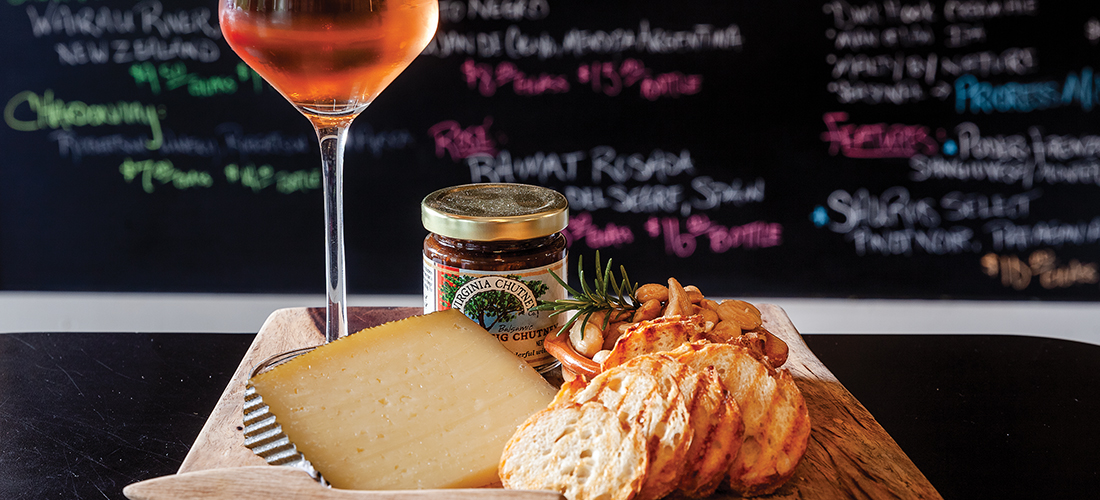
What the Grenache?
More than your average blend
By Angela Sanchez
Grenache is a wonderful, versatile wine varietal often hiding in plain sight. It’s not as popular as cabernet and pinot noir but just as delicious. It doesn’t stand alone often, as those two varietals do, but in the right growing and production environment it can be spectacular on its own. Most often grenache is found in a blended wine, adding fruitiness or rounding out the mouthfeel.
From Spain, where it is the most widely planted, to France, the United States, Australia and South Africa, amazing wines are made with grenache. With bright flavors of berry fruit, heavy on the raspberry, that come from its late-ripening characteristic, it produces blends with fruit-forward jam notes and stand-alone varietal wines with deep, rich, smooth structure and balance. Some of the world’s greatest rosé wines are produced with grenache as the stand-alone or lead varietal in a blend, like the Côtes de Provence rosés of France. Grenache is a hardy grape with dark red skin that likes a dry, hot climate. You will often see it untrellised, growing as a “bush” vine, with no irrigation — the practice of dry farming, throughout Southern France, Spain, Australia and South Africa. The vines can grow this way for many years, becoming “old vines” producing wines of exceptional character and life.
Most experts agree grenache was born in Spain. It can be found all over the country, reigning in Rioja and dominating in Priorat, located in Tarragona in the Catalonian region. A blending agent in Rioja’s Crianza wines, it lends balance, fruit and softness to the main varietal, tempranillo. In Priorat, it takes on a sense of place like nowhere else it is planted. The clay soils of the region are vehicles driving the rich pencil lead and heavy berry flavors there, producing a heavier, deeper, brooding style of grenache-driven wine. Serve these Spanish beauties with a three-month aged Manchego cheese, sheep’s milk, on grilled bread rubbed with fresh garlic and dried figs. In summer, rub fresh tomatoes cut in half on warm garlic bread, drizzled with Spanish olive oil.
France is where grenache lends its juicy, fruit-forward attributes and rounds out such Southern French classics like Côtes du Rhone and Chateauneuf du Pape. Both are traditionally blends of syrah, grenache, carignan and mouvedre. Sometimes the lead grape is syrah, heaviest in the blend and backed up by grenache and the other varietals. This scenario creates a darker, heavier style than when led with grenache which creates a bit softer, rounder, less tannic style. For a real treat, try a lesser-known appellation from the Southern Rhône Valley, Gigondas (the name refers to the village where the grapes are grown). The Famille Perrin Gigondas is a beautiful example of a wine produced with 80 percent grenache to 20 percent syrah. The unmistakable nose of ripe berries and strawberry cream pie, finished by a balance of acid and fruit, make it a great wine to pair with softer cheeses like camembert and double cream brie.
In the New World (wine-producing countries outside Europe), grenache has staked its claim on such notable wines as Australia’s famous GSM blends, grenache, syrah and mouvedre. Easy to grow and handle in hot and rugged environments, it has adapted well to Australia’s climate and has become a benchmark for many of its most famous wines. In the U.S., the growing region in and around Paso Robles in Southern California boasts a prime growing environment for grenache. Tablas Creek winery has embraced grenache as a primary for its Côte de Tablas wines and rosé blends. These New World gems are best paired with a hearty sharp cheese like a sharp English cheddar or aged Gouda.
Whether or not you find grenache in a blend, like a Spanish Crianza or Côtes du Rhone or in the famous GSMs of Australia, they will not disappoint. From subtle, fruit-driven and balanced, to rich, round and ripe, grenache is a great alternative to what we tend to drink so often, making it worth the effort to seek out. PS
Angela Sanchez owns Southern Whey, a cheese-centric specialty food store in Southern Pines, with her husband, Chris Abbey. She was in the wine industry for 20 years and was lucky enough to travel the world drinking wine and eating cheese.





